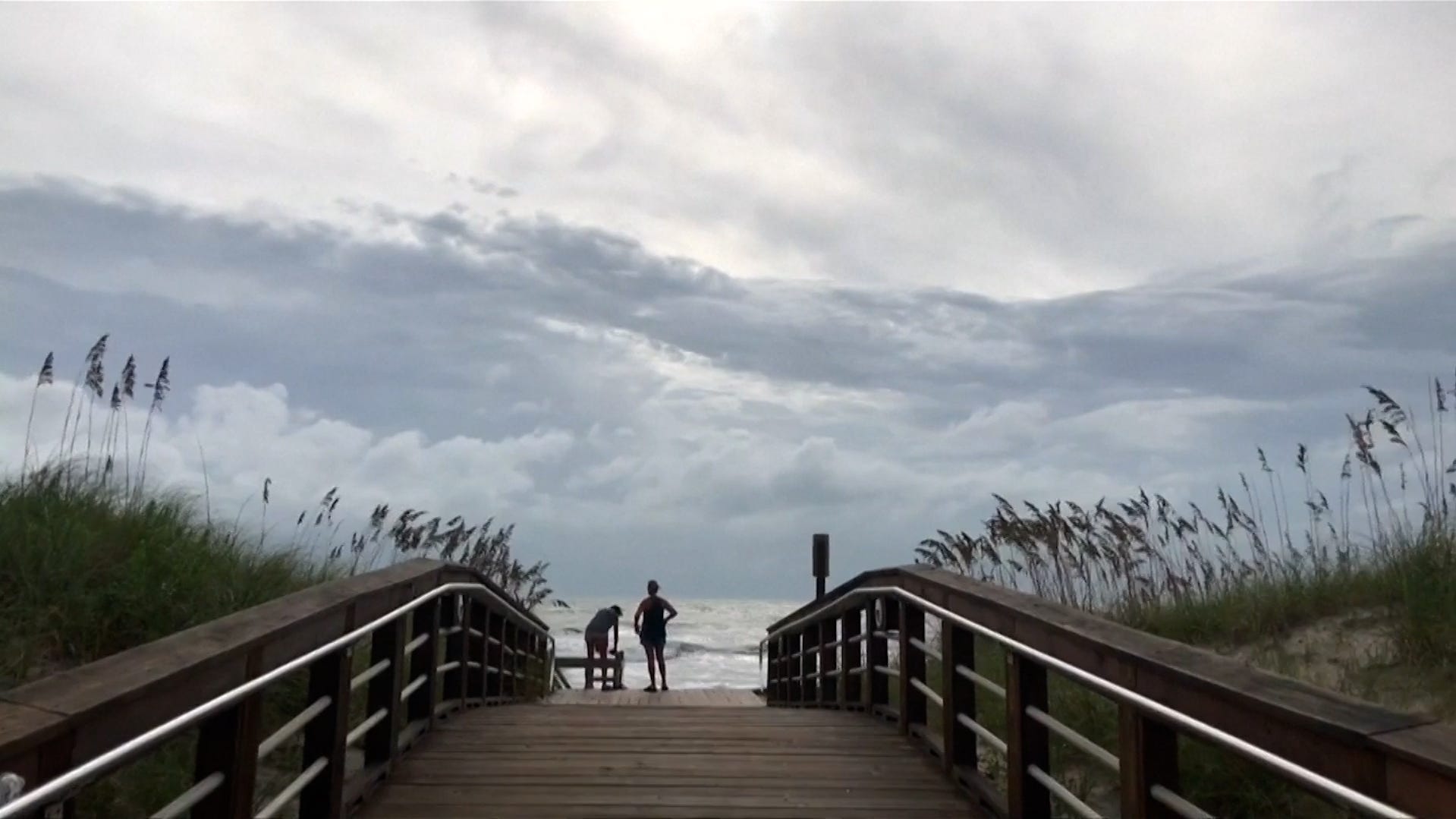Storm tracker: Chantal weakens into post-tropical cyclone

Chantal has weakened into a post-tropical cyclone and the flash flood threat from the storm has waned, the National Hurricane Center said late Monday night, July 7.
As of 11 p.m. ET on July 7, Chantal was located about 85 miles northeast of Cape May, New Jersey, with maximum sustained winds around 25 mph with higher gusts. By Tuesday morning, the system was located around 100 miles south of Long Island, New York.
Hurricane center forecasters said Chantal is moving toward the northeast and this motion is expected to continue with an "increase in forward speed" into Tuesday. Due to its forward motion and modest wind field, the cyclone's wind field is becoming less defined, the NHC said.
"Post-Tropical Cyclone Chantal could open up into a trough of low pressure by Tuesday morning," the hurricane center said Monday night.
Chantal could produce an additional inch of rain across portions of New Jersey and Long Island Monday night into Tuesday morning, with an inch or two also possible across portions of Cape Cod, Martha's Vineyard, and Nantucket early Tuesday morning.
Additionally, life-threatening surf and rip current conditions are expected to continue at beaches along the U.S. east coast from northeastern Florida to the Mid-Atlantic states for the next day or so, the NHC said.
In the Pacific, the hurricane center said an area of low pressure could form several hundred miles offshore of southwestern Mexico late this week.
Forecasters said environmental conditions are expected to only be marginally conducive for development of this system, and the hurricane center said the storm has a 10% chance of formation through the next seven days.
Storm tracker
How do hurricanes form?
Hurricanes are born in the tropics, above warm water. Clusters of thunderstorms can develop over the ocean when water temperatures exceed 80 degrees Fahrenheit. If conditions are right, the clusters swirl into a storm known as a tropical wave or tropical depression.
A tropical depression becomes a named tropical storm once its sustained wind speeds reaches 39 miles per hour. When its winds reach 74 mph, the storm officially becomes a hurricane.
Prepare now for hurricanes
Delaying potentially life-saving preparations could mean waiting until it’s too late. "Get your disaster supplies while the shelves are still stocked, and get that insurance checkup early, as flood insurance requires a 30-day waiting period," NOAA recommends.
- Develop an evacuation plan: If you are at risk from hurricanes, you need an evacuation plan. Now is the time to begin planning where you would go and how you would get there.
- Assemble disaster supplies: Whether you’re evacuating or sheltering-in-place, you’re going to need supplies not just to get through the storm but for the potentially lengthy aftermath, NOAA said.
- Get an insurance checkup and document your possessions: Contact your insurance company or agent now and ask for an insurance check-up to make sure you have enough insurance to repair or even replace your home and/or belongings. Remember, home and renters insurance doesn’t cover flooding, so you’ll need a separate policy for it. Flood insurance is available through your company, agent, or the National Flood Insurance Program. Act now, as flood insurance requires a 30-day waiting period.
- Create a family communication plan: NOAA said to take the time now to write down your hurricane plan, and share it with your family. Determine family meeting places, and make sure to include an out-of-town location in case of evacuation.
- Strengthen your home: Now is the time to improve your home’s ability to withstand hurricane impacts. Trim trees; install storm shutters, accordion shutters, and/or impact glass; seal outside wall openings.
Gabe Hauari is a national trending news reporter at Paste BN. You can follow him on X @GabeHauari or email him at Gdhauari@gannett.com.